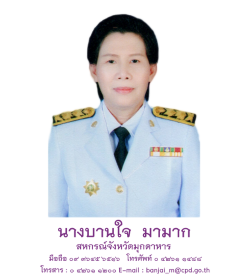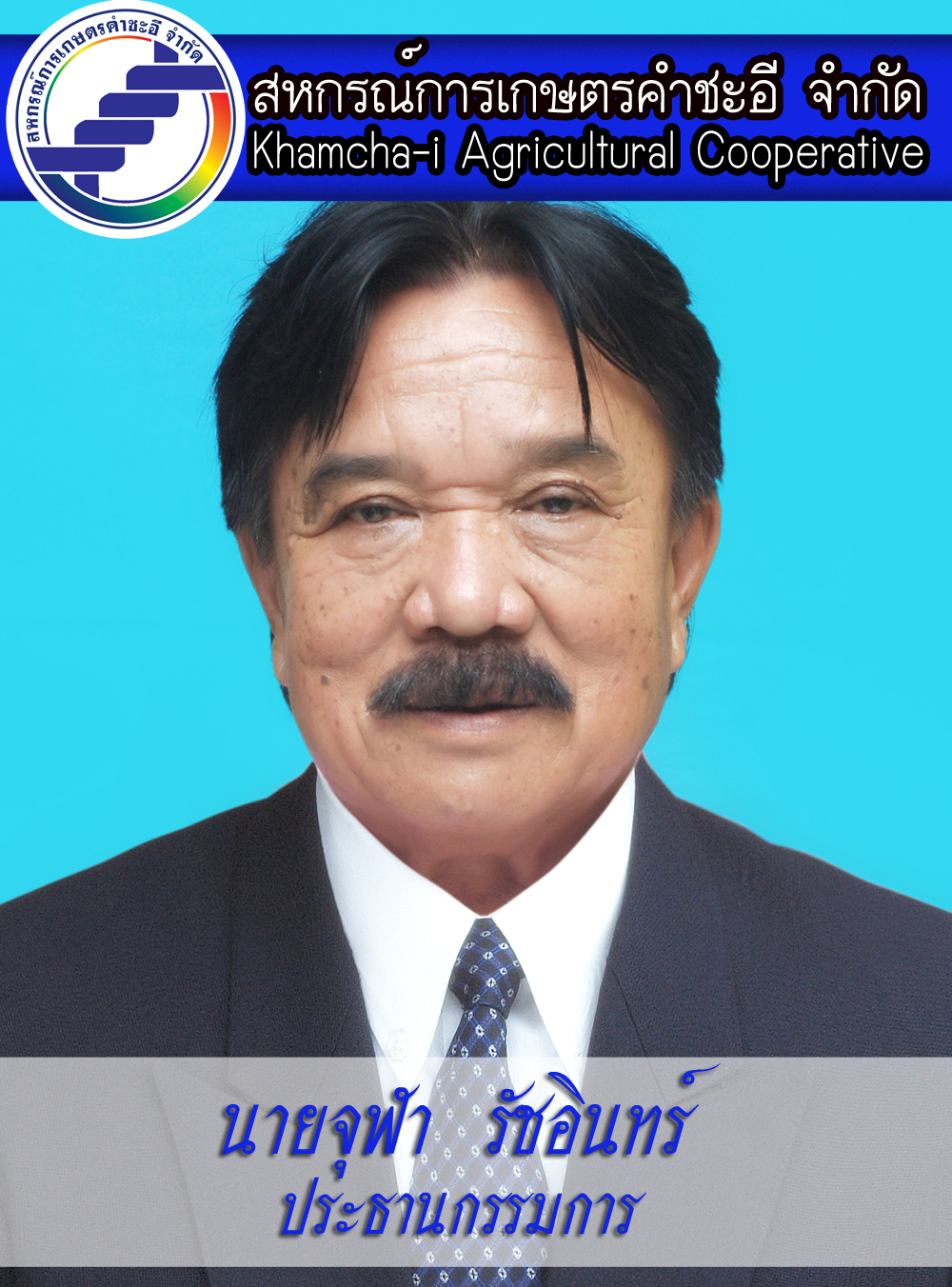×
ยินดีต้อนรับสู่ ฟอรัม Kunena!
อยากรู้จังเลยว่าคุณชอบอะไร รู้จักกับที่นี่ได้อย่างไร และสาเหตุจูงใจอะไรจึงลงทะเบียนเป็นสมาชิกกับทางเรา ช่วยแจ้งให้เราได้ทราบหน่อยได้ไหม
ยินดีต้อนรับสมาชิกใหม่ทุกท่าน และหวังว่าทางเราจะได้รับใช้คุณเยี่ยงนี้ตลอดไป
อยากรู้จังเลยว่าคุณชอบอะไร รู้จักกับที่นี่ได้อย่างไร และสาเหตุจูงใจอะไรจึงลงทะเบียนเป็นสมาชิกกับทางเรา ช่วยแจ้งให้เราได้ทราบหน่อยได้ไหม
ยินดีต้อนรับสมาชิกใหม่ทุกท่าน และหวังว่าทางเราจะได้รับใช้คุณเยี่ยงนี้ตลอดไป
San Fernando Valley under threat as Los Angeles fire rages on
- PeterIonix
- Topic Author
- Visitor
-

2 months 1 week ago #2660898
by PeterIonix
Replied by PeterIonix on topic официальная ссылка на omg
Why this small city is the ‘eyeglasses capital’ of Japan
omg официальный сайт
Japan is famed for its skilled artisans, masters who maintain a commitment to tradition while modernizing production techniques in line with the development of new materials and processes.
Many places in the country have grown famous by focusing on specific crafts, from exquisite kimonos to perfectly designed knives. Among them is the small city of Sabae, in Fukui prefecture, about a 3.5-hour train ride from Tokyo.
omgto3.com
omg shop
It’s widely known as Japan’s eyeglasses capital – and for good reason. Sabae produces over 90% of the frames manufactured in the country, according to the local government. Signs and objects shaped like eyeglasses can be found on city streets, and there’s even a museum and festival devoted to spectacles.
The art of making spectacles
Sabae, located on Japan’s main Honshu island near the city of Fukui, has been producing quality eyewear for more than a century.
It all started in 1905, when a local government official invited skilled eyeglasses artisans to come to the city to teach their craft, an attempt to create new opportunities for local farmers.
The move paid off. Today, Sabae has over 100 companies that collaborate to make pairs of glasses.
Though these studios use cutting-edge machinery to produce new frames made of metal and acetate, most stages still require the skilled hands and trained eyes of Sabae’s master artisans.
That includes Takeshi Yamae, a frame designer with Japanese brand Boston Club who has lived in the city for 17 years. He tells CNN one pair of glasses can involve more than 200 steps.
“I first design it, sketch it, then put it into my computer,” he says. “From the time I start designing, to the time I have the perfect product, it takes more than a year.”
omg официальный сайт
Japan is famed for its skilled artisans, masters who maintain a commitment to tradition while modernizing production techniques in line with the development of new materials and processes.
Many places in the country have grown famous by focusing on specific crafts, from exquisite kimonos to perfectly designed knives. Among them is the small city of Sabae, in Fukui prefecture, about a 3.5-hour train ride from Tokyo.
omgto3.com
omg shop
It’s widely known as Japan’s eyeglasses capital – and for good reason. Sabae produces over 90% of the frames manufactured in the country, according to the local government. Signs and objects shaped like eyeglasses can be found on city streets, and there’s even a museum and festival devoted to spectacles.
The art of making spectacles
Sabae, located on Japan’s main Honshu island near the city of Fukui, has been producing quality eyewear for more than a century.
It all started in 1905, when a local government official invited skilled eyeglasses artisans to come to the city to teach their craft, an attempt to create new opportunities for local farmers.
The move paid off. Today, Sabae has over 100 companies that collaborate to make pairs of glasses.
Though these studios use cutting-edge machinery to produce new frames made of metal and acetate, most stages still require the skilled hands and trained eyes of Sabae’s master artisans.
That includes Takeshi Yamae, a frame designer with Japanese brand Boston Club who has lived in the city for 17 years. He tells CNN one pair of glasses can involve more than 200 steps.
“I first design it, sketch it, then put it into my computer,” he says. “From the time I start designing, to the time I have the perfect product, it takes more than a year.”
Reply to PeterIonix
- RonaldPramp
- Topic Author
- Visitor
-

2 months 1 week ago #2660899
by RonaldPramp
Replied by RonaldPramp on topic omg ссылка на сайт
How a drab Soviet metropolis became Central Asia’s capital of cool
omg
Several cities around the globe have reinvented themselves in recent years, but none more successfully than Almaty.
Since the collapse of the USSR, Kazakhstan’s largest city (population 2.2 million and growing) has evolved from a drab, run-of-the-mill Soviet metropolis into the urban star of Central Asia.
omgto3.com
omg официальный
Along the way, the city has developed one of the world’s most beautiful metro systems, grown into a thriving banking and finance center, complemented its vintage bazaars with luxury boutiques and modern shopping malls and reshaped its traditional gastronomy into a nouvelle cuisine that’s drawing raves from foodies around the world.
Almaty is also evolving into the cultural and artistic hub of Central Asia. It’s already got several world-class museums (including a “secret” underground collection that doesn’t even have a name) and a dazzling new cultural center slated to open early next year.
“It’s an incredibly livable city,” says long-time American resident Dennis Keen, a historic preservation advocate and founder of Walking Almaty.
“Green and clean. You don’t need a car. The public transit here is fantastic. And it’s very much the center of contemporary art and dining in Central Asia.”
Keen adds that whenever he tells someone back home that he lives in Kazakhstan, “Borat” inevitably comes up. The movie’s title character doesn’t paint a very flattering portrait of the Central Asian nation. But nowadays one is tempted to think that if Borat visited Almaty now, he would say, “Very nice!”
omg
Several cities around the globe have reinvented themselves in recent years, but none more successfully than Almaty.
Since the collapse of the USSR, Kazakhstan’s largest city (population 2.2 million and growing) has evolved from a drab, run-of-the-mill Soviet metropolis into the urban star of Central Asia.
omgto3.com
omg официальный
Along the way, the city has developed one of the world’s most beautiful metro systems, grown into a thriving banking and finance center, complemented its vintage bazaars with luxury boutiques and modern shopping malls and reshaped its traditional gastronomy into a nouvelle cuisine that’s drawing raves from foodies around the world.
Almaty is also evolving into the cultural and artistic hub of Central Asia. It’s already got several world-class museums (including a “secret” underground collection that doesn’t even have a name) and a dazzling new cultural center slated to open early next year.
“It’s an incredibly livable city,” says long-time American resident Dennis Keen, a historic preservation advocate and founder of Walking Almaty.
“Green and clean. You don’t need a car. The public transit here is fantastic. And it’s very much the center of contemporary art and dining in Central Asia.”
Keen adds that whenever he tells someone back home that he lives in Kazakhstan, “Borat” inevitably comes up. The movie’s title character doesn’t paint a very flattering portrait of the Central Asian nation. But nowadays one is tempted to think that if Borat visited Almaty now, he would say, “Very nice!”
Reply to RonaldPramp
- DouglasUNITO
- Topic Author
- Visitor
-

2 months 1 week ago #2660977
by DouglasUNITO
Replied by DouglasUNITO on topic омг ссылка
Why this small city is the ‘eyeglasses capital’ of Japan
omg онион
Japan is famed for its skilled artisans, masters who maintain a commitment to tradition while modernizing production techniques in line with the development of new materials and processes.
Many places in the country have grown famous by focusing on specific crafts, from exquisite kimonos to perfectly designed knives. Among them is the small city of Sabae, in Fukui prefecture, about a 3.5-hour train ride from Tokyo.
omgto3.com
официальная ссылка на omg
It’s widely known as Japan’s eyeglasses capital – and for good reason. Sabae produces over 90% of the frames manufactured in the country, according to the local government. Signs and objects shaped like eyeglasses can be found on city streets, and there’s even a museum and festival devoted to spectacles.
The art of making spectacles
Sabae, located on Japan’s main Honshu island near the city of Fukui, has been producing quality eyewear for more than a century.
It all started in 1905, when a local government official invited skilled eyeglasses artisans to come to the city to teach their craft, an attempt to create new opportunities for local farmers.
The move paid off. Today, Sabae has over 100 companies that collaborate to make pairs of glasses.
Though these studios use cutting-edge machinery to produce new frames made of metal and acetate, most stages still require the skilled hands and trained eyes of Sabae’s master artisans.
That includes Takeshi Yamae, a frame designer with Japanese brand Boston Club who has lived in the city for 17 years. He tells CNN one pair of glasses can involve more than 200 steps.
“I first design it, sketch it, then put it into my computer,” he says. “From the time I start designing, to the time I have the perfect product, it takes more than a year.”
omg онион
Japan is famed for its skilled artisans, masters who maintain a commitment to tradition while modernizing production techniques in line with the development of new materials and processes.
Many places in the country have grown famous by focusing on specific crafts, from exquisite kimonos to perfectly designed knives. Among them is the small city of Sabae, in Fukui prefecture, about a 3.5-hour train ride from Tokyo.
omgto3.com
официальная ссылка на omg
It’s widely known as Japan’s eyeglasses capital – and for good reason. Sabae produces over 90% of the frames manufactured in the country, according to the local government. Signs and objects shaped like eyeglasses can be found on city streets, and there’s even a museum and festival devoted to spectacles.
The art of making spectacles
Sabae, located on Japan’s main Honshu island near the city of Fukui, has been producing quality eyewear for more than a century.
It all started in 1905, when a local government official invited skilled eyeglasses artisans to come to the city to teach their craft, an attempt to create new opportunities for local farmers.
The move paid off. Today, Sabae has over 100 companies that collaborate to make pairs of glasses.
Though these studios use cutting-edge machinery to produce new frames made of metal and acetate, most stages still require the skilled hands and trained eyes of Sabae’s master artisans.
That includes Takeshi Yamae, a frame designer with Japanese brand Boston Club who has lived in the city for 17 years. He tells CNN one pair of glasses can involve more than 200 steps.
“I first design it, sketch it, then put it into my computer,” he says. “From the time I start designing, to the time I have the perfect product, it takes more than a year.”
Reply to DouglasUNITO
- ArthurMulse
- Topic Author
- Visitor
-

2 months 1 week ago #2660978
by ArthurMulse
Replied by ArthurMulse on topic omg онион
How a drab Soviet metropolis became Central Asia’s capital of cool
ссылка на omg
Several cities around the globe have reinvented themselves in recent years, but none more successfully than Almaty.
Since the collapse of the USSR, Kazakhstan’s largest city (population 2.2 million and growing) has evolved from a drab, run-of-the-mill Soviet metropolis into the urban star of Central Asia.
omgto3.com
омг зеркало
Along the way, the city has developed one of the world’s most beautiful metro systems, grown into a thriving banking and finance center, complemented its vintage bazaars with luxury boutiques and modern shopping malls and reshaped its traditional gastronomy into a nouvelle cuisine that’s drawing raves from foodies around the world.
Almaty is also evolving into the cultural and artistic hub of Central Asia. It’s already got several world-class museums (including a “secret” underground collection that doesn’t even have a name) and a dazzling new cultural center slated to open early next year.
“It’s an incredibly livable city,” says long-time American resident Dennis Keen, a historic preservation advocate and founder of Walking Almaty.
“Green and clean. You don’t need a car. The public transit here is fantastic. And it’s very much the center of contemporary art and dining in Central Asia.”
Keen adds that whenever he tells someone back home that he lives in Kazakhstan, “Borat” inevitably comes up. The movie’s title character doesn’t paint a very flattering portrait of the Central Asian nation. But nowadays one is tempted to think that if Borat visited Almaty now, he would say, “Very nice!”
ссылка на omg
Several cities around the globe have reinvented themselves in recent years, but none more successfully than Almaty.
Since the collapse of the USSR, Kazakhstan’s largest city (population 2.2 million and growing) has evolved from a drab, run-of-the-mill Soviet metropolis into the urban star of Central Asia.
omgto3.com
омг зеркало
Along the way, the city has developed one of the world’s most beautiful metro systems, grown into a thriving banking and finance center, complemented its vintage bazaars with luxury boutiques and modern shopping malls and reshaped its traditional gastronomy into a nouvelle cuisine that’s drawing raves from foodies around the world.
Almaty is also evolving into the cultural and artistic hub of Central Asia. It’s already got several world-class museums (including a “secret” underground collection that doesn’t even have a name) and a dazzling new cultural center slated to open early next year.
“It’s an incredibly livable city,” says long-time American resident Dennis Keen, a historic preservation advocate and founder of Walking Almaty.
“Green and clean. You don’t need a car. The public transit here is fantastic. And it’s very much the center of contemporary art and dining in Central Asia.”
Keen adds that whenever he tells someone back home that he lives in Kazakhstan, “Borat” inevitably comes up. The movie’s title character doesn’t paint a very flattering portrait of the Central Asian nation. But nowadays one is tempted to think that if Borat visited Almaty now, he would say, “Very nice!”
Reply to ArthurMulse
- Billybub
- Topic Author
- Visitor
-

2 months 1 week ago #2661095
by Billybub
Replied by Billybub on topic Бест Вей
Все, кто хоть немного знаком с историей Гермеса и <a href="
compromat01.group/main/economics/132714-...rysha-ili-hvost.html
">Бест Вей, понимают, что силовики ведут себя как захватчики, а не как защитники. Они утверждают, что защищают людей, но почему тогда сами и блокируют наши деньги, не дают пайщикам распоряжаться своим имуществом? Звучит как издевка: забрать активы, парализовать выплаты и потом обвинить компанию, что она не выполняет обязательства перед клиентами. Давайте смотреть правде в глаза: МВД взяло на себя роль хищника, а не защитника. Они не заинтересованы в «законности», их цель — разграбить всё до последней копейки, подставить руководителей и подорвать доверие ко всем подобным организациям. Пока Колокольцев закрывает глаза, его подчинённые проводят, по сути, захват активов тысяч россиян, в том числе и военных. Но сколько бы они ни пытались замолчать наш голос, мы будем бороться за наши права и наши деньги!
Лях
Лях
Reply to Billybub
- RobertUnomb
- Topic Author
- Visitor
-

2 months 1 week ago #2661176
by RobertUnomb
Replied by RobertUnomb on topic омг вход
How a drab Soviet metropolis became Central Asia’s capital of cool
омг
Several cities around the globe have reinvented themselves in recent years, but none more successfully than Almaty.
Since the collapse of the USSR, Kazakhstan’s largest city (population 2.2 million and growing) has evolved from a drab, run-of-the-mill Soviet metropolis into the urban star of Central Asia.
omgto3.com
площадка оmg darkmarket
Along the way, the city has developed one of the world’s most beautiful metro systems, grown into a thriving banking and finance center, complemented its vintage bazaars with luxury boutiques and modern shopping malls and reshaped its traditional gastronomy into a nouvelle cuisine that’s drawing raves from foodies around the world.
Almaty is also evolving into the cultural and artistic hub of Central Asia. It’s already got several world-class museums (including a “secret” underground collection that doesn’t even have a name) and a dazzling new cultural center slated to open early next year.
“It’s an incredibly livable city,” says long-time American resident Dennis Keen, a historic preservation advocate and founder of Walking Almaty.
“Green and clean. You don’t need a car. The public transit here is fantastic. And it’s very much the center of contemporary art and dining in Central Asia.”
Keen adds that whenever he tells someone back home that he lives in Kazakhstan, “Borat” inevitably comes up. The movie’s title character doesn’t paint a very flattering portrait of the Central Asian nation. But nowadays one is tempted to think that if Borat visited Almaty now, he would say, “Very nice!”
омг
Several cities around the globe have reinvented themselves in recent years, but none more successfully than Almaty.
Since the collapse of the USSR, Kazakhstan’s largest city (population 2.2 million and growing) has evolved from a drab, run-of-the-mill Soviet metropolis into the urban star of Central Asia.
omgto3.com
площадка оmg darkmarket
Along the way, the city has developed one of the world’s most beautiful metro systems, grown into a thriving banking and finance center, complemented its vintage bazaars with luxury boutiques and modern shopping malls and reshaped its traditional gastronomy into a nouvelle cuisine that’s drawing raves from foodies around the world.
Almaty is also evolving into the cultural and artistic hub of Central Asia. It’s already got several world-class museums (including a “secret” underground collection that doesn’t even have a name) and a dazzling new cultural center slated to open early next year.
“It’s an incredibly livable city,” says long-time American resident Dennis Keen, a historic preservation advocate and founder of Walking Almaty.
“Green and clean. You don’t need a car. The public transit here is fantastic. And it’s very much the center of contemporary art and dining in Central Asia.”
Keen adds that whenever he tells someone back home that he lives in Kazakhstan, “Borat” inevitably comes up. The movie’s title character doesn’t paint a very flattering portrait of the Central Asian nation. But nowadays one is tempted to think that if Borat visited Almaty now, he would say, “Very nice!”
Reply to RobertUnomb
Time to create page: 2.340 seconds
-
สำนักงานสหกรณ์การเกษตรคำชะอี จำกัด เลขที่ 124 หมู่ 5 ตำบลน้ำเที่ยง อำเภอคำชะอี จังหวัดมุกดาหาร รหัสไปรษณีย์ 49110 โทรศัพท์ & โทรสาร 042-691-037 E-mail: kcico-op@hotmail.co.th

-
ฟอรัม

-
ฟอรัมหลัก

-
สวัสดีจ้า

- San Fernando Valley under threat as Los Angeles fire rages on











